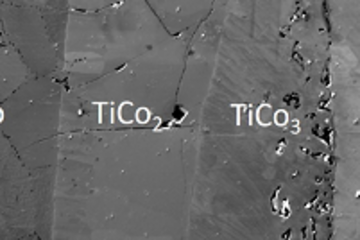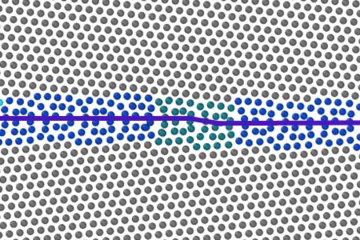All genres
281.
Talk
Ionic and Electronic Transport Through Insulating nm-Films at High Field Strengths. 3rd Euroconference on Solid State Ionics, Teulada, Sardinia, Italy (1996)
282.
Talk
Stationäre und instationäre Impedanzspektroskopie zur Untersuchung der Korrosion dünner Aluminiumoxidschichten. 35. AGEF-Seminar "Korrosion und Korrosionsschutz", Iserlohn, Germany (1995)
283.
Talk
Elektronische und ionische Transportprozesse in ultradünnen Aluminiumoxidschichten. Oberflächentechnik ´95, DGO 33. Jahrestagung, Fulda, Germany (1995)
284.
Talk
The Physical Meaning of the Components of an Equivalent Circuit of Thin Valve Metal Oxide Films. 46th Meeting of the International Society of Electrochemistry, Xiamen, China (1995)
285.
Talk
Ionic Relaxation in Thin Anodic Valve Metal Oxide Films. Electroceramics IV, Aachen, Germany (1994)
286.
Talk
Frequenz- und Zeitdomäne: Transformationen. AGEF-Workshop Impedanzspektroskopie, Düsseldorf, Germany (1994)
287.
Conference Report
6th international symposium Electrochemical Micro- and Nanosystem Technologies (EMNT 2006). EMNT2006, Bonn, Germany, August 22, 2006 - August 25, 2006., (2007)
288.
Poster
Resistometry measurements to monitor abiotic and biogenic sulfide corrosion of iron. Engineering of Functional Interfaces EnFI 2010, Marburg, Germany (2010)
289.
Poster
Nanoantennas from high melting point transition metal nanowires. Spring meeting of the German Physical Society, Regensburg, Germany (2010)
290.
Poster
Mid-Infrared spectroscopic studies on single transition metal nanowire. Nanotech Europe, Berlin, Germany (2009)
291.
Poster
Single Oxidized Tungsten Nanowires as Ion Selective Probes. 7th International Symposium on Electrochemical Micro- and Nanosystems, Ein-Gedi, Israel (2008)
292.
Poster
High Througput Synthesis and Characterization of Ti Based Combinatorial Alloys. 7th International Symposium on Electrochemical Micro- and Nanosystems, Ein-Gedi, Israel (2008)
293.
Poster
Selective Phase Dissolution of NiAl-Mo Directionally Solidified Eutectic Alloys. 7th International Symposium on Electrochemical Micro- and Nanosystems, Ein-Gedi, Israel (2008)
294.
Poster
Combinatorial microelectrochemistry with a scanning droplet cell on binary and ternary Ti, Ta and Hf alloys. International Smposium on Anodizing Science and Technology 2008, Rusutsu, Japan (2008)
295.
Poster
Combinatorial electrochemistry on valve metal alloys. 2nd International IMPRS-SurMat Workshop on Surface and Interface Engineering in Advanced Materials, Bochum, Deutschland (2008)
296.
Poster
Microbial corrosion induced by a highly aggressive SRB strain. 2nd International IMPRS-SurMat Workshop on Surface and Interface Engineering in Advanced Materials, Bochum, Germany (2008)
297.
Poster
Evaluation of Surface reactivity of β-Ti. 2nd International IMPRS-SurMat Workshop on Surface and Interface Engineering in Advanced Materials, Bochum, Deutschland (2008)
298.
Poster
Electrochemical Release of High Aspect Ratio Gold Nanobelts from an Fe-Au eutectoid. Bunsentagung 2008, Saarbrücken, Deutschland (2008)
299.
Poster
Tungsten nanowires for the measurement of the pH value in confined zones. Bunsentagung 2008, Saarbrücken, Germany (2008)
300.
Poster
A novel approach for the synthesis of nanowires in iso-oriented arrays. Bunsentagung 2008, Saarbrücken, Germany (2008)











